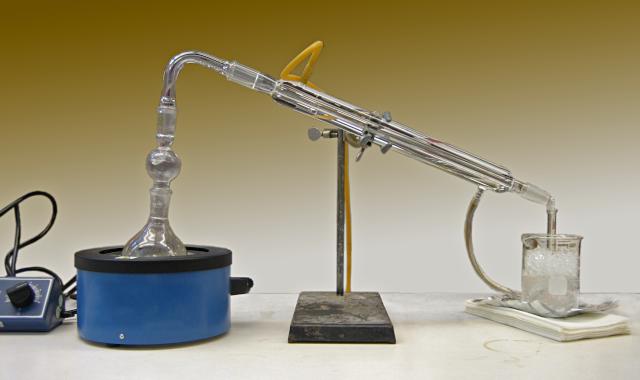Mark Dominus (陶敏修)
mjd@pobox.com

Archive:
| 2025: | JFMAMJ |
| JAS | |
| 2024: | JFMAMJ |
| JASOND | |
| 2023: | JFMAMJ |
| JASOND | |
| 2022: | JFMAMJ |
| JASOND | |
| 2021: | JFMAMJ |
| JASOND | |
| 2020: | JFMAMJ |
| JASOND | |
| 2019: | JFMAMJ |
| JASOND | |
| 2018: | JFMAMJ |
| JASOND | |
| 2017: | JFMAMJ |
| JASOND | |
| 2016: | JFMAMJ |
| JASOND | |
| 2015: | JFMAMJ |
| JASOND | |
| 2014: | JFMAMJ |
| JASOND | |
| 2013: | JFMAMJ |
| JASOND | |
| 2012: | JFMAMJ |
| JASOND | |
| 2011: | JFMAMJ |
| JASOND | |
| 2010: | JFMAMJ |
| JASOND | |
| 2009: | JFMAMJ |
| JASOND | |
| 2008: | JFMAMJ |
| JASOND | |
| 2007: | JFMAMJ |
| JASOND | |
| 2006: | JFMAMJ |
| JASOND | |
| 2005: | OND |
Subtopics:
| Mathematics | 245 |
| Programming | 99 |
| Language | 95 |
| Miscellaneous | 75 |
| Book | 50 |
| Tech | 49 |
| Etymology | 35 |
| Haskell | 33 |
| Oops | 30 |
| Unix | 27 |
| Cosmic Call | 25 |
| Math SE | 25 |
| Law | 22 |
| Physics | 21 |
| Perl | 17 |
| Biology | 16 |
| Brain | 15 |
| Calendar | 15 |
| Food | 15 |
Comments disabled
Thu, 01 May 2025
A puzzle about balancing test tubes in a centrifuge
!!\def\nk#1#2{\left\langle{#1 \atop #2}\right\rangle} \def\dd#1{\nk{12}{#1}} !!
Suppose a centrifuge has !!n!! slots, arranged in a circle around the center, and we have !!k!! test tubes we wish to place into the slots. If the tubes are not arranged symmetrically around the center, the centrifuge will explode.
(By "arranged symmetrically around the center, I mean that if the center is at !!(0,0)!!, then the sum of the positions of the tubes must also be at !!(0,0)!!.)
Let's consider the example of !!n=12!!. Clearly we can arrange !!2!!, !!3!!, !!4!!, or !!6!! tubes symmetrically:




Equally clearly we can't arrange only !!1!!. Also it's easy to see we can do !!k!! tubes if and only if we can also do !!n-k!! tubes, which rules out !!n=12, k=11!!.
From now on I will write !!\nk nk!! to mean the problem of balancing !!k!! tubes in a centrifuge with !!n!! slots. So !!\dd 2, \dd 3, \dd 4, !! and !!\dd 6!! are possible, and !!\dd 1!! and !!\dd{11}!! are not. And !!\nk nk!! is solvable if and only if !!\nk n{n-k}!! is.
It's perhaps a little surprising that !!\dd7!! is possible. If you just ask this to someone out of nowhere they might have a happy inspiration: “Oh, I'll just combine the solutions for !!\dd3!! and !!\dd4!!, easy.” But that doesn't work because two groups of the form !!3i+j!! and !!4i+j!! always overlap.
For example, if your group of !!4!! is the slots !!0, 3, 6, 9!! then you can't also have your group of !!3!! be !!1, 5, 9!!, because slot !!9!! already has a tube in it.

The other balanced groups of !!3!! are blocked in the same way. You cannot solve the puzzle with !!7=3+4!!; you have to do !!7=3+2+2!! as below left. The best way to approach this is to do !!\dd5!!, as below right. This is easy, since the triangle only blocks three of the six symmetric pairs. Then you replace the holes with tubes and the tubes with holes to turn !!\dd5!! into !!\dd{12-5}=\dd7!!.


Given !!n!! and !!k!!, how can we decide whether the centrifuge can be safely packed?
Clearly you can solve !!\nk nk!! when !!n!! is a multiple of !!k>1!!, but the example of !!\dd5!! (or !!\dd7!!) shows this isn't a necessary condition.
A generalization of this is that !!\nk nk!! is always solvable if !!\gcd(n,k) > 1!! since you can easily balance !!g = \gcd(n, k)!! tubes at positions !!0, \frac ng, \frac{2n}g, \dots, \frac {(g-1)n}g!!, then do another !!g!! tubes one position over, and so on. For example, to do !!\dd8!! you just put first four tubes in slots !!0, 3, 6, 9!! and the next four one position over, in slots !!1, 4, 7, 10!!.

An interesting counterexample is that the strategy for !!\dd7!!, where we did !!7=3+2+2!!, cannot be extended to !!\nk{14}9!!. One would want to do !!k=7+2!!, but there is no way to arrange the tubes so that the group of !!2!! doesn't conflict with the group of !!7!!, which blocks one slot from every pair.
But we can see that this must be true without even considering the geometry. !!\nk{14}9!! is the reverse of !!\nk{14}{14-9} = \nk{14}5!!, which impossible: the only nontrivial divisors of !!n=14!! are !!2!! and !!7!!, so !!k!! must be a sum of !!2!!s and !!7!!s, and !!5!! is not.
You can't fit !!k=3+5=8!! tubes when !!n=15!!, but again the reason is a bit tricky. When I looked at !!8!! directly, I did a case analysis to make sure that the !!3!!-group and the !!5!!-group would always conflict. But again there was an easier was to see this: !!8=15-7!! and !!7!! clearly won't work, as !!7!! is not a sum of !!3!!s and !!5!!s. I wonder if there's an example where both !!k!! and !!n-k!! are not obvious?
For !!n=20!!, every !!k!! works except !!k=3,17!! and the always-impossible !!k=1,19!!.
What's the answer in general? I don't know.
Addenda
20250502
Now I am amusing myself thinking about the perversity of a centrifuge with a prime number of slots, say !!13!!. If you use it at all, you must fill every slot. I hope you like explosions!
While I did not explode any centrifuges in university chemistry, I did once explode an expensive Liebig condenser.
Condenser setup by Mario Link from an original image by Arlen on Flickr. Licensed cc-by-2.0, provided via Wikimedia Commons.
20250503
Michael Lugo informs me that a complete solution may be found on Matt Baker's math blog. I have not yet looked at this myself.
Omar Antolín points out an important consideration I missed: it may be necessary to subtract polygons. Consider !!\nk{30}6!!. This is obviously possible since !!6\mid 30!!. But there is a more interesting solution. We can add the pentagon !!{0, 6, 12, 18, 24}!! to the digons !!{5, 20}!! and !!{10, 25}!! to obtain the solution $${0,5,6,10,12,18, 20, 24, 25}.$$
Then from this we can subtract the triangle !!{0, 10, 20}!! to obtain $${5, 6, 12, 18, 24, 25},$$ a solution to !!\nk{30}6!! which is not a sum of regular polygons:
Thanks to Dave Long for pointing out a small but significant error, which I have corrected.
20250505
- Robin Houston points out this video, The centrifuge Problem with Holly Krieger, on the Numberphile channel.
[Other articles in category /math] permanent link




